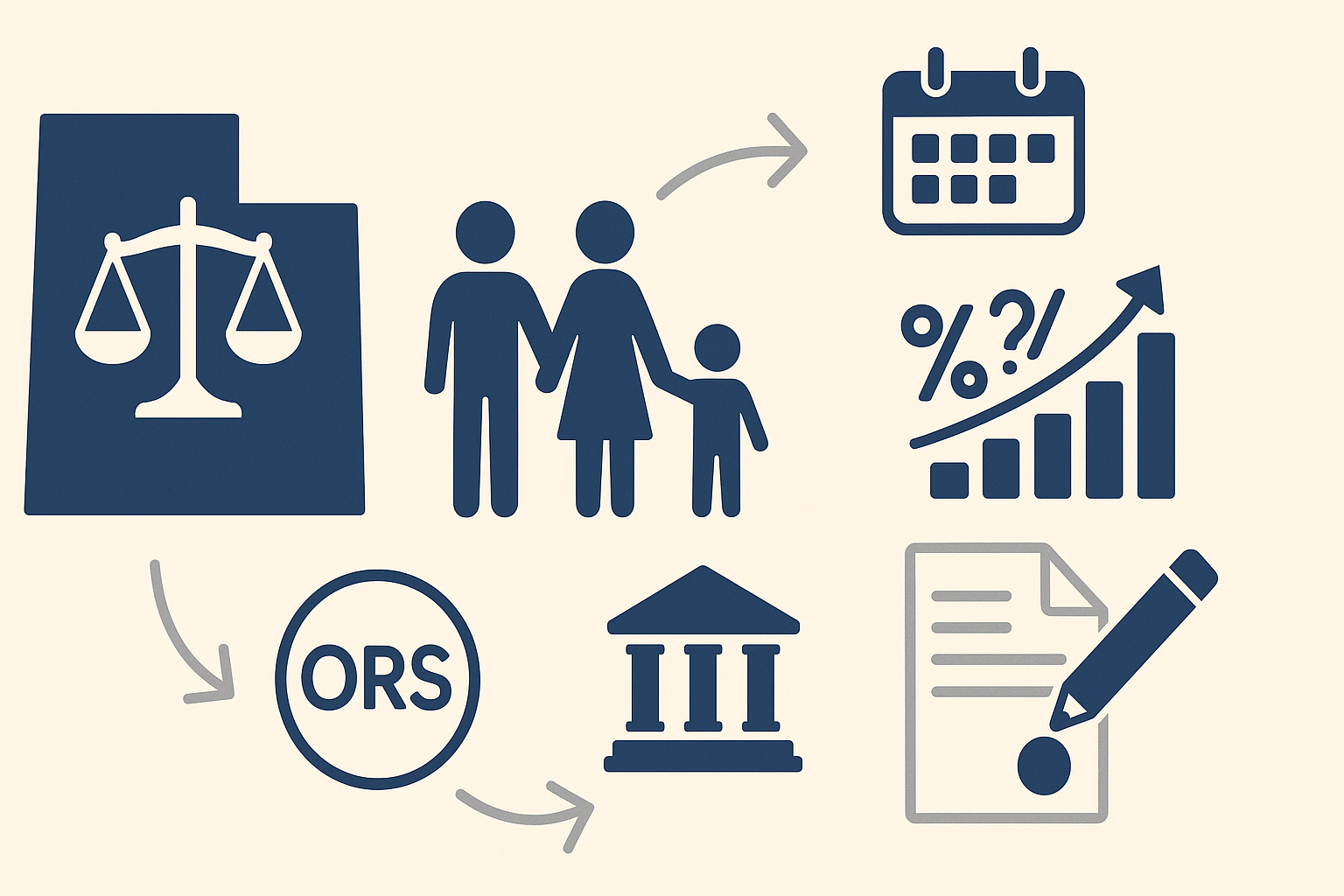When a couple begins the divorce process in Utah, the court often needs to decide how certain issues like custody, child support, and living arrangements will be handled before the divorce is finalized. These short-term rulings are called temporary orders.
Temporary orders provide structure and prevent conflict while the divorce is pending. They help ensure children are cared for, bills are paid, and both spouses know their responsibilities. Though temporary, these orders can strongly influence the final divorce outcome, making it crucial to understand how they work and what to expect.
What Are Temporary Orders in Utah?
Temporary orders are legally binding decisions made by a Utah court to guide key matters during the divorce process. These can include:
Temporary child custody and parenting schedules
Child and spousal support (alimony)
Who lives in the family home and who pays the mortgage or rent
Use of vehicles and payment of debts
Temporary restraining or conduct orders
They are designed to stabilize the situation until the final decree of divorce is issued. Utah’s framework for temporary orders is based on Utah Code § 30-3-3 and Rule 106 of the Utah Rules of Civil Procedure, which outline how to request and enforce these orders.
Watch: What is a Motion for Temporary Orders in a Utah Divorce Case
This short explainer covers timing, purpose, and how courts make initial decisions right after a case is filed.
How the Temporary Order Process Works
Filing a Motion for Temporary Orders
Either spouse can request temporary orders after filing for divorce. The request must clearly explain what is sought and include evidence to support it.
Serving the Motion
The moving party must serve the motion on the other spouse, who may respond in writing before the hearing.
Court Hearing
The court holds a short hearing, reviews financial declarations and affidavits, and issues temporary orders that stay in effect until final decree or modification.
Watch: 4 Things You Should Know About Temporary Orders in Utah
Learn what these orders can cover, how long they last, and how they shape the next stages of a divorce.
Required Forms and Key Filings
When requesting temporary orders, Utah courts require several important documents:
Motion for Temporary Orders – the formal request explaining what relief is sought.
Financial Declaration Form – outlines income, assets, debts, and monthly expenses.
Affidavit or Declaration Supporting the Motion – provides evidence and context, such as child care details or financial need.
Notice of Hearing – informs the other spouse when and where the court will hear the motion.
All forms are available on the Utah State Courts website. Accuracy is critical mistakes or incomplete forms can delay the process or result in denied motions.
What Temporary Orders Typically Include
Custody and Parenting Time: Where children live and how time is divided.
Child Support: Based on both parents’ gross monthly income and number of children.
Spousal Support: Financial stability for a lower-earning spouse during the case.
Possession of Property: Temporary use of the home, vehicles, or other shared assets.
Bill Payments and Debts: Assignment of short-term responsibility for expenses.
Incomplete financial disclosures can distort support calculations. Insufficient documentation for childcare or expenses weakens your position. Missing deadlines can limit your ability to be heard. Assuming orders are permanent they can be modified if circumstances change. Once the judge signs temporary orders, both spouses must comply immediately. These orders remain until the divorce is finalized or the court modifies them. Violations can result in fines, loss of privileges, or contempt. Judges often view temporary orders as a workable preview of final arrangements. Consistent compliance and stability can influence the final decree. Understand how temporary orders transition toward final rulings and what to do if circumstances change. In many Utah divorce cases, temporary orders act as a roadmap for daily life until the case concludes. If a schedule or payment plan works well, courts may carry parts of it into the final decree. Temporary orders in Utah divorce cases help manage custody, support, and property until the divorce is final. Understanding the process, filing the right forms, and following court direction are essential. Legal guidance from an experienced Utah divorce attorney can protect your interests and help you move forward with confidence. If you are starting or responding to a divorce in Utah, temporary orders can set the tone for your case and affect long term outcomes. Gibb Law helps clients prepare, file, and present strong motions so your financial and parental rights are clearly represented.Common Mistakes to Avoid
What Happens After Temporary Orders Are Issued
Watch: What Happens After Temporary Orders During A Divorce?
Practical Examples and Legal Insights
Summary
Next Steps



